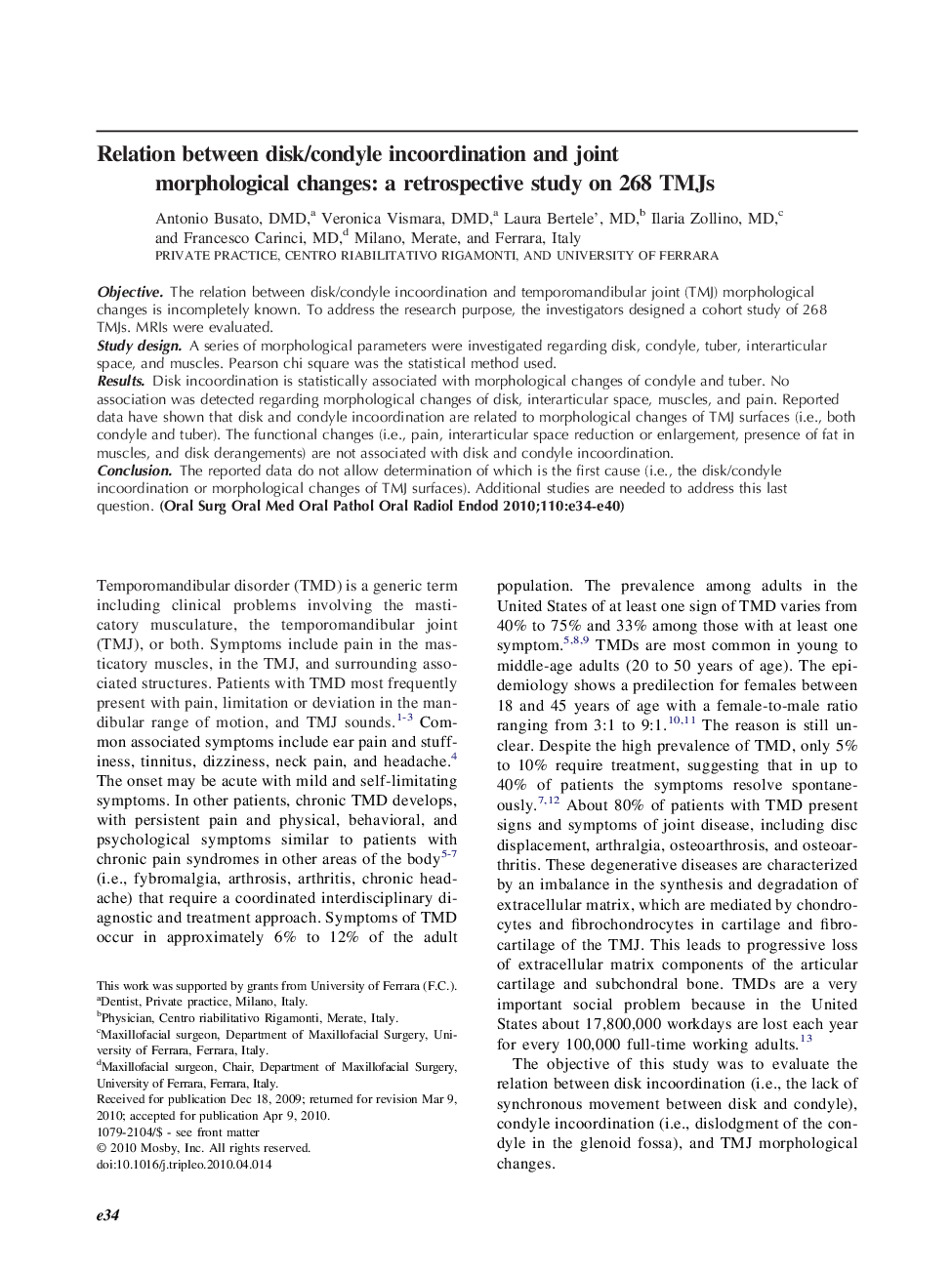| Article ID | Journal | Published Year | Pages | File Type |
|---|---|---|---|---|
| 3167431 | Oral Surgery, Oral Medicine, Oral Pathology, Oral Radiology, and Endodontology | 2010 | 7 Pages |
ObjectiveThe relation between disk/condyle incoordination and temporomandibular joint (TMJ) morphological changes is incompletely known. To address the research purpose, the investigators designed a cohort study of 268 TMJs. MRIs were evaluated.Study designA series of morphological parameters were investigated regarding disk, condyle, tuber, interarticular space, and muscles. Pearson chi square was the statistical method used.ResultsDisk incoordination is statistically associated with morphological changes of condyle and tuber. No association was detected regarding morphological changes of disk, interarticular space, muscles, and pain. Reported data have shown that disk and condyle incoordination are related to morphological changes of TMJ surfaces (i.e., both condyle and tuber). The functional changes (i.e., pain, interarticular space reduction or enlargement, presence of fat in muscles, and disk derangements) are not associated with disk and condyle incoordination.ConclusionThe reported data do not allow determination of which is the first cause (i.e., the disk/condyle incoordination or morphological changes of TMJ surfaces). Additional studies are needed to address this last question.
